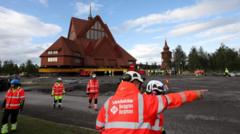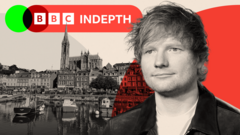As the air-conditioned bus weaves through the bustling traffic of the eastern Indian city of Kolkata, tour leader Sujoy Sen lists the many sights on the itinerary.
It sounds like a snapshot of the city's cosmopolitan history—colonial buildings like the General Post Office and the former British viceroy's mansion, Hindu and Jain temples, Greek Orthodox and Portuguese churches, an Anglican cathedral, the homes of freedom fighters who fought the British Raj, and Indian merchants who prospered under it.
But unlike most heritage tours, this one happens after sundown. And its main focus is not just the history or architecture but the lights illuminating the buildings.
The Kolkata Illumination Project is the latest addition to the city's many heritage tours and walks. Mr. Sen, who runs a tour company, chanced upon a newspaper article about city enthusiasts lighting up some of the city's grand but often neglected heritage buildings. He obtained a list of buildings and went to check them out.
I was stunned, he says. I have seen Paris by night. I didn't realise Kolkata could be like that also. I wanted other people to see it as well.
Himanjali Sankar, born and raised in Kolkata and now living in Delhi, joined the tour. She says the buildings themselves are familiar to her but the illumination changes them. It is like they are coming alive, reclaiming their grandeur.
The initiative is the brainchild of a citizens' group called Kolkata Restorers.
But it's not a real organisation. There is no committee, no president. It's just a label. A WhatsApp group, says Mudar Patherya, the force behind the endeavor.
His journey began with efforts to paint an old market crowned with a grand dome and a broken clock. Soon, he realized that the beauty of these structures needed to be showcased at night, leading to the illumination of the dome and other significant buildings.
Within 21 months, Patherya and the Kolkata Restorers have lit up around 92 buildings that include iconic structures like the Geological Survey of India and Raj Bhavan, once a residence for the British viceroy.
We want to get to 200 buildings, he hopes, envisioning Kolkata becoming one of the most wondrous cities to explore at night in the country.
The goal of these efforts is not only to beautify the city but also to restore pride in its architectural heritage, which has been fading over the years. With a mix of neoclassical, Gothic, and Art Deco designs, Kolkata’s unique identity is being reclaimed, one light at a time.




















